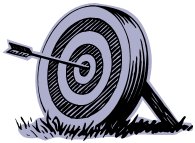
Maria Ross - Marketing and Brand Expert
Defining a brand strategy is essential for all businesses and a task that many small business owners find daunting. To be successful in any economy or market, businesses need to have a defined niche and a sound strategy for how they are going to position themselves in the market place. Regardless of how good a product or service may be, positioning and perception make all the difference.
Taking the time to define a marketing and brand strategy are a wise time and money investment that will pay off quickly. Two of Seattle’s big brand and marketing dynamos, Maria Ross, Marketing Director for Red-Slice and Whitney Keyes of Whitney Keyes Productions, are holding a workshop to guide you through the marketing maze and help you find practical and creative ways to attract new customers – and keep the ones you have loyal to you. The workshop is being held February 11th, 2009, and is an excellent opportunity to get practical strategies from Seattle marketing dynamos. For more information about the workshop, just visit: Branding Workshop.
Best,
Heather
.
Filed under: virtual assistant | Tagged: achieving sales through viral marketing, Bellevue VA, Bellevue virtual assistant, blog VA, blog virtual assistant, book marketing VA, book marketing virtual assistant, bookkeeping VA, Bothell VA, brand and marketing workshop, business marketing, business owners, creative ways to attract customers, info marketing VA, info marketing virtual assistant, internet sales va, internet sales virtual assistant, Kirkland VA, Kirkland virtual assistant, maria ross, market your book to the masses, marketing planning, marketing VA, online sales virtual assistant, red-slice, Redmond VA, Redmond virtual assistant, sales planning, sales VA, Seattle small business assistant, Seattle small business help, Seattle VA, seattle virtual assistant, shopping cart va, shopping cart virtual assistant, small business, small business strategies, small business strategy, small business VA, small business virtual assistant, Snohomish VA, Snohomish virtual assistant, social marketing, social networking, social networking viral marketing, strategic VA, strategic virtual assistant, techie VA, techniques to incorporate viral marketing into your bus, use tag line in materials, viral marketing, Viral Marketing in Any Market, virtual assistant, virtual business, virtual marketing, virtual office support, virtual sales, Washington VA, washington virtual assistant, web savvy VA, Web Savvy Virtual Assistant, whitnet keys productions, whitney keys, Woodinville VA, Woodinville virtual assistant | Leave a comment »






